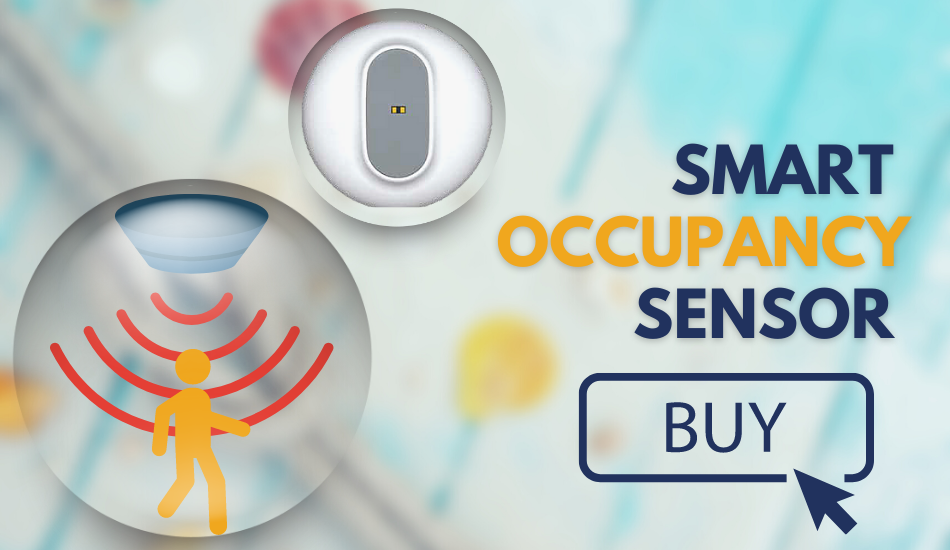Do you face issues with the real-time information and detection of the occupancy of shared working space? This can be resolved with a specific device known as occupancy sensors or PIR motion sensors.
A few years ago, the office buildings were not like today. The allocation of resources and working desks was done thoroughly that it took up more space and less productivity. People were not aware of empty spaces and resources.
However, with smart occupancy sensor and detection technology, the facility managers have access to better and more powerful tools and software that provide real-time data information.
How do the Occupancy Sensors Work?
The occupancy sensors work on motion detection with infrared and ultrasonic detection technology. The sensors detect the movement in a particular area that comes under the detection field of the sensor. It sensors the movement and motion, and for this, PIR sensors are used for accurate detection.
The Panasonic PIR sensors are used here, but the exact detection areas are based on the sensors’ detection range. The detection field ranges from 2.5 m to 17 m for indoor uses such as co-working spaces and parking areas.
The room occupancy sensor relies on ultrasonic technology in which the ultrasonic sound waves are released and reflected, which is based on a pattern. If the pattern changes or a slight difference is sensed, it will be reported as occupancy.
The smart occupancy sensors provide real-time data directly to your smartphone. You can also integrate it with your booking software to give you live notifications.
How are Occupancy Sensors Helping?
The space or desk or a room occupancy sensor is installed at each desk or space, which provides accurate information about the presence or absence of a person in the area. Panasonic PIR sensors are incredibly mindful and provide privacy which only informs about the occupancy without giving the face or name of the person taking up the space.
This provides deep insight into the data to work on a better allocation plan of the working desks, conference rooms, brainstorming areas, and other resources like printers and copying machines.
What are the Benefits of Smart Occupancy Sensors?
The intelligent room occupancy sensors have many additional benefits, and some basic technical features also prove to be beneficial. Some of the benefits are:
Wireless Handling
The intelligent sensors are based on IoT devices which can be handled remotely through smartphones and other means.
Real-Time Data Processing
Intelligent sensors provide the data information in real-time. This is the feature that is mainly desired in devices. It allows the employees and tenants to have accurate and factual information about the current occupancy so that they do not overbook or double book one single slot or desk.
Accuracy & Precision
It is highly desired if the device can provide accurate and reliable information. The reliability of information is more important than any other feature. If the data provided by the sensors are not accurate or if it is not valid for that time being, it can bring consequences with it.
Cloud Storage
The room occupancy sensors have another critical feature: they can store the data in the cloud storage rather than some local storage, as the local storage can corrupt or damage the valuable raw information.
Physical Features
We have the detection area and accuracy-related concerns like in what conditions you might not get the best results. One should not overlook this detail; this will affect the data and its quality. Mind the installation location of the sensors. If the installation location is not ideal, it will temper the accuracy or might also give false information.
Why do we Need an Occupancy Sensor in Modern Office Space?
The modern and trendy offices do not operate as they did a few decades back. To achieve the maximum benefit of your office accommodation, you need to have real-time information about the new spaces, workstations, business units, and workplace team meets.
Manual monitoring will not do the job when you have so many things to monitor and report. You will require monitoring the whole building and allocating the seats, which will be a daunting task.
The companies do not think they need one dedicated space or desk for each employee, and considering the rising trend of the “work from home” situation, it might also be true. So the companies do not want to increase their cost by reserving a workstation and another resource for one employee.
Smart occupancy sensors have become the need of the hour, and it is also straightforward to find and buy smart occupancy sensors online or through a vendor.
Conclusion
Innovative and disruptive technologies are transforming the business and personal world alike. The IoT has impacted our lives for good, and its benefits cannot be counted. Another benefit is added in the shape of intelligent occupancy sensors for buildings.
An intelligent room occupancy sensor gets triggered when it detects motion in its detection area. They use several technologies to detect movement, like ultrasonic and infrared waves.
The need to buy intelligent occupancy sensors for building and co-working spaces resolves the issues of utilizing data, collecting information, and optimum usage of space.

